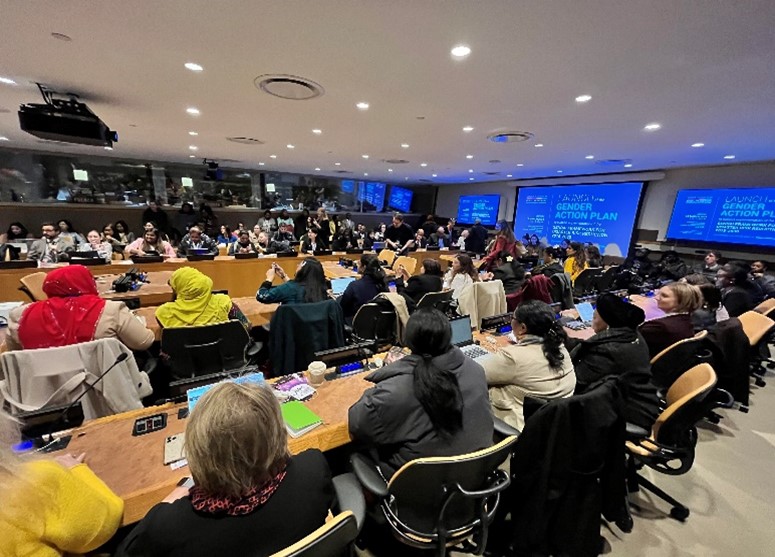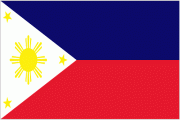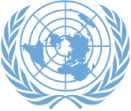

Conference Room 6 of the UN Headquarters was packed with attendees during the side event to launch of the Sendai Gender Action Plan (GAP) for disaster risk reduction during the 68th Session of the UN Commission on the Status of Women (UN CSW68) (NYPM Photo Library)
NEW YORK, 18 March 2024 – The Philippines was cited as “leading the way as a model” in gender-responsive disaster risk reduction during a jampacked side-event to launch the Sendai Gender Action Plan (GAP) for disaster risk reduction during the 68th Session of the UN Commission on the Status of Women (UN CSW68) held at the UN Headquarters in New York, USA.
Speaking on behalf of the Philippine Government, Undersecretary of Social Welfare and Development Emmeline Aglipay Villar stated that the launch of the Sendai GAP “comes at a very opportune time, when accelerating progress towards the mutually reinforcing goals of gender equality and disaster risk reduction is extremely critical.”
Undersecretary Villar highlighted the need to enhance ambition and collective action to scale up disaster risk reduction efforts that are gender-responsive for the remaining 6 years of the Sendai Framework for Disaster Risk Reduction. Although much progress has been made in addressing gender inequalities in disaster risk reduction, the Undersecretary underscored that the scale remains inadequate and understanding the gendered dimension of risk and applying an intersectionality lens are key to overcoming this challenge.
Undersecretary Villar also cited the concrete steps undertaken by the Philippine Government to protect women and girls living in poverty who suffer the most during natural and man-made disasters. These are the law-mandated establishment of evacuation centers that are child-friendly and gender sensitive, as well as prioritization in the delivery of health, nutrition and medical services to pregnant and lactating women, women and girls with disabilities, and victim-survivors of violence and abuse.
Undersecretary Villar also mentioned the “Project Lawa at Binhi” (Local Adaptation to Water Access and Breaking Insufficiency through Nutritious Harvest for the Impoverished), a partnership between the Philippines and the UN World Food Programme (WFP) aimed at strengthening the capabilities of poor and vulnerable families during severe drought through cash-for-training or -work (CFTW).


DSWD Undersecretary Hon. Emmeline Aglipay Villar delivering the Philippine intervention during the Launch of the Sendai GAP (left photo) and sharing a light moment with Permanent Representative Antonio Manuel Lagdameo after the conclusion of the side event (right photo). (NYPM Photo Library)
The Launch of the Sendai GAP was a result of the Agreed Conclusions of the 66th Session of the UNCSW in March 2022 which called for a gender action plan for the Sendai Framework. Consequently, the Political Declaration of the Midterm Review of the Sendai Framework, which was held in May 2023, highlighted the need for greater attention and action on gender equality and women’s empowerment in all DRR efforts which would help accelerate implementation of the Sendai Framework until 2030.
The UN Office for Disaster Risk Reduction (UNDRR), UN Population Fund (UNFPA) and UN Women co-led the process to develop the Sendai GAP. The representatives of these three UN organs also spoke during the event and manifested that the Sendai GAP is a key step to attaining gender-responsive disaster risk reduction. They added that the process was an example of a one-UN approach; and underlined that the active participation of UN member states in the development of the Sendai GAP promotes successful implementation of the Sendai Framework. END


